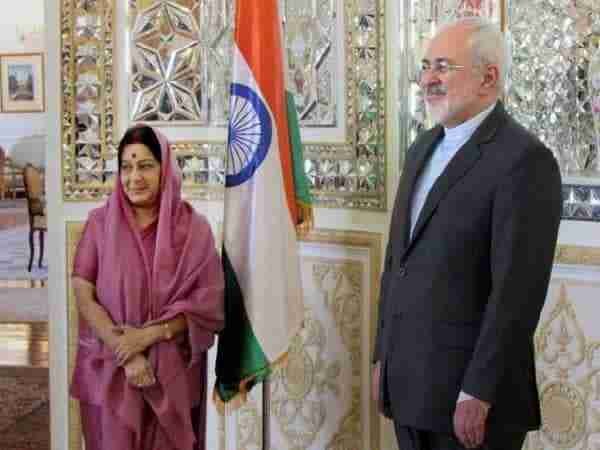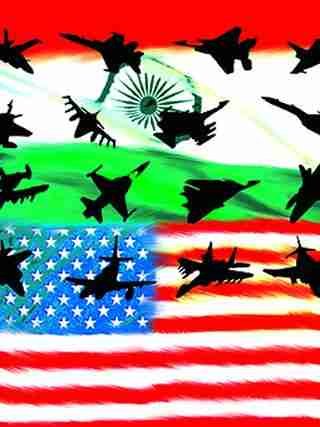India’s Iran dilemma
European Union, particularly the UK, France & Germany are clearly peeved by the ways of theTrump administration that’s now staffed with hardliners and have urged the US not to escalate tensions any further.
Tension runs high in the Gulf region now, following the attacks on four oil tankers. The attacks gave an opportunity to the US and its close ally Saudi Arabia to point fingers at Iran for these attacks, alleging that they were meant to undermine the security of crude oil supplies from the Gulf region. As a key development, we have the Iranian foreign minister, Mohammad Javad Zarif visiting New Delhi to seek India’s support as President Trump decides to squeeze Iran further with sanctions.
This poses a significant strategic challenge for India, which enjoys good relations with the US, the Saudis, and the UAE on one side, and an increasingly cornered Iran, on the other side. Thus India has a lot at stake in this latest round of tensions in the Gulf, that goes way beyond satisfying India’s demands for crude oil. It is also about India’s strategic autonomy and the foreign policy choices it must make.
India’s relations with Iran are centuries old, but that has little meaning to the US. More importantly, India is the second-biggest buyer of Iranian crude oil after China, and thus the decision of President Trump not to extend the waiver for eight countries including India, with effect from 01 May, to continue to buy oil from Iran, is certain to impact India’s oil imports and thus the prices of oil within India.
And even though officials have confirmed that India will now stop importing crude oil from Iran and that New Delhi expects Saudi Arabia (and other OPEC countries) to make up for the lost volumes from Iran, the harsh reality on the ground could be different.
On 22nd October last year, Saudi Arabia’s Energy Minister Khalid al-Falih had said that his country will not be able to compensate (by producing extra) for the three million barrels of oil that Iran exports. Thus, there is a possibility of a big rise in crude oil prices from USD 75 a barrel, to their pre-2014 highs of over a USD 100 per barrel. This would certainly please US oil companies like Schlumberger and Halliburton, who have lobbied hard with the Trump administration to facilitate a rise in crude oil prices, from USD 27 a barrel in 2016, that led them to slash about 3,35,000 jobs.
And apart from the revenues for American oil companies, Mr Trump’s aim is to also isolate and cripple Iran’s economy, to please his hard-line domestic constituency since Iran is seen as an enemy that must be punished for the storming of the US embassy in Tehran in 1979, when the chief US ally the Shah of Iran was removed, as a revolution brought in the hardliners led by the Ayatollahs into power.
Since then, the Iranians have posed a challenge to the dominance of the Saudi regime in the Islamic world and has increasingly become a strategic challenge to the US and its main regional ally Israel, Mr Trump is working on his narrow agenda that carries little support elsewhere.
The European Union, particularly the UK, France and Germany are clearly peeved by the ways of the Trump administration, that is now staffed with hardliners and have urged the US not to escalate tensions any further. In fact, the UK has even warned that there is now the risk of conflict in the Gulf region, if Iran is cornered further, and if it decides to block the Straits of Hormuz, from which consignments of oil that cater to a fifth of the global needs pass through. The US has already positioned an aircraft carrier group (a mobile sea-based naval base for land attacks) in the Gulf region. America’s F-15 and F-35 Fighter jets and B-52 bombers have begun air patrols to convey America’s seriousness.
But the Iranians aren’t likely to back down easily. They have been at the receiving end of consistent US pressure for four decades now, and their generations have lived with isolation and sanctions. And even now, the EU countries – especially those that had put together the carefully crafted multi-nation nuclear deal with Iran, from which the US has now withdrawn – as well as Russia and China, have chosen to ignore the US threats of sanctions against those countries and their entities that will continue to do business with Iran. One reason that the US is confident that its efforts to economically punish Iran – even though Tehran has complied with the requirements of the nuclear deal (JCPOA) – is because the US controls the global financial messaging system (SWIFT) used by Banks and corporate entities.
However, the European signatories of JCPOA (the UK, France and Germany) have now created an alternative, the Instrument in Support of Trade Exchange – INSTEX, to enable their companies to trade with Iran outside the US-dollar-based banking system.
India has the option, therefore, to continue with its non-dollar based trade with Iran, or opt for “a robust plan for an adequate supply of crude oil to Indian refineries” from other sources, as Mr Modi’s Oil Minister Dharmendra Pradhan has assured. In all likelihood, India would adopt this latter position, since New Delhi has been working plans to get crude oil from other countries in Africa and Latin America, even though this would be more expensive than getting oil from Iran, which is India’s closest supplier and one that gives India a 60-day line of credit. But that is the price we have to pay as India gets dragged closer and closer into America’s diplomatic fold.
Comments are closed.




Pingback:India’s Iran dilemma – Fauji Reporter